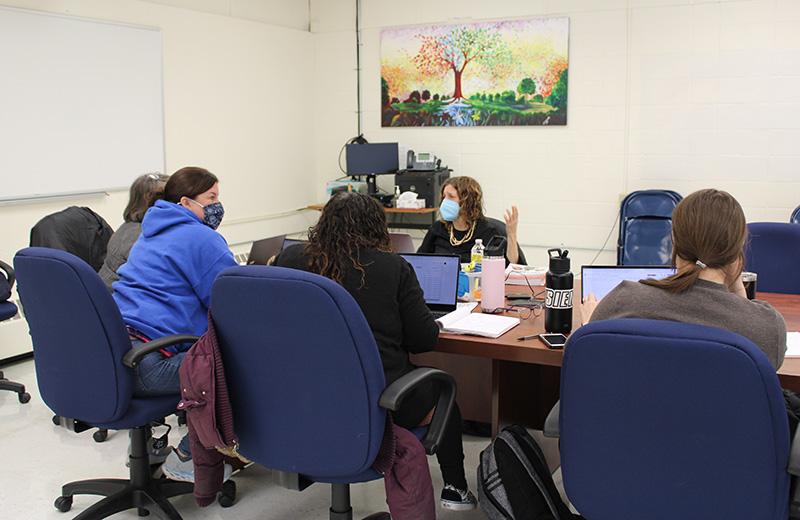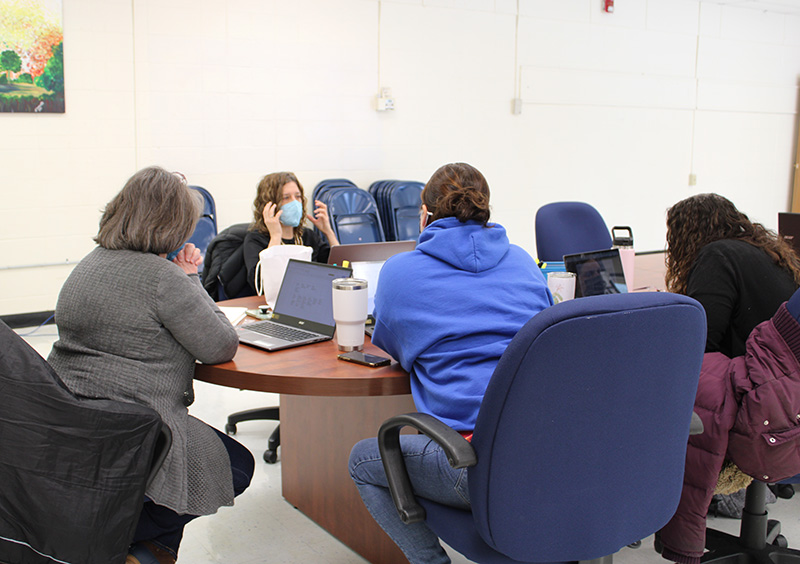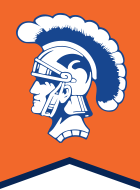District teachers representing grade levels from pre-K through grade 8 met with literacy consultant Leah Mermelstein earlier this month in pursuit of creating an effective, cohesive curriculum for writing.
“We are tasked with creating a K-through-8 writing curriculum,” said Mermelstein, who is working with a writing cadre of teachers.

Mermelstein graduated from the University of Massachusetts Amherst with a degree in elementary education and a master’s degree in curriculum reform and cultural diversity. She was a teacher in the New York City school system and then went to work at Teachers College at Columbia University in 1997 where she helped develop reading and writing programs for different schools in the city. It was a precursor to what she does now.
In 2003, she started her own consulting company with districts and universities throughout the country. She has written five books on teaching reading and writing and is a sought-after speaker at literacy conferences
Here in Florida, Mermelstein started working with the group of teachers, gathering their teaching practices and techniques as well as their ideas for going forward.
“I look at this literacy cadre as a pilot team, figuring out the resources we have and developing those we need,” said Mermelstein. “For them to be part of this process is the right way to do it. They will be able to carry it out and be motivated about it because they created it. It’s the best way for us to work together to provide the students with what they need.”

“It is critical for us as a district to provide our teachers and students with the resources they need at every grade level,” said Superintendent Larry Leaven. “We are asking our teachers to teach in ways that cause them to step away from the single textbook, to gather materials from a broad range of sources, to know and understand content more deeply, and to create learning opportunities that connect with students in ways that challenge and inspire. Our literacy cadre has accepted that challenge!”
Mermelstein first met with the teachers, who are part of the group, in January, working on the curriculum and mapping, using standards and current practices. She was back in February, digging into learning targets, ELA standards, and aligning grade level standards, content and genres. She visited classrooms the following day to work with the students and teachers, to tailor the lesson to them.
In March, Mermelstein will be back to review the work the teachers have done and make revisions if needed. She and the team will map out learning activities and look at resources, such as examples of essays, that will support the students in each grade.
Part of this approach allows each grade level to take a “deep dive” into a different area. While each grade will touch on all identified areas of writing, each grade will focus on a specific area, such as narrative or dialogue. They will build on the learning from the previous grade and strengthen another area within the curriculum. This way, she said, they are continuously building literacy from one grade to the next and nothing is left out.
“Literacy is really the building blocks of learning,” Mermelstein said. “It is crucial in every area of our children’s education – math, social studies, science. In every area, students must be able to read and write effectively in order to succeed.”


